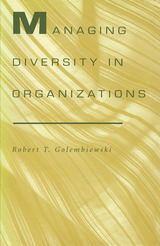Paper: 978-1-58901-194-6
Library of Congress Classification HF5549.M69 2008
Dewey Decimal Classification 352.66
Efficiency. Innovation. Results. Accountability. These, advocates claim, are the fruits of performance management. In recent decades government organizations have eagerly embraced the performance model—but the rush to reform has not delivered as promised.
Drawing on research from state and federal levels, Moynihan illustrates how governments have emphasized some aspects of performance management—such as building measurement systems to acquire more performance data—but have neglected wider organizational change that would facilitate the use of such information. In his analysis of why and how governments in the United States have made the move to performance systems, Moynihan identifies agency leadership, culture, and resources as keys to better implementation, goal-based learning, and improved outcomes.
How do governments use the performance information generated under performance systems? Moynihan develops a model of interactive dialogue to highlight how performance data, which promised to optimize decision making and policy change for the public's benefit, has often been used selectively to serve the interests of particular agencies and individuals, undermining attempts at interagency problem solving and reform.
A valuable resource for public administration scholars and administrators, The Dynamics of Performance Management offers fresh insight into how government organizations can better achieve their public service goals.
See other books on: Administrative agencies | Dynamics | Organizational effectiveness | Public Affairs & Administration | Reform
See other titles from Georgetown University Press



























